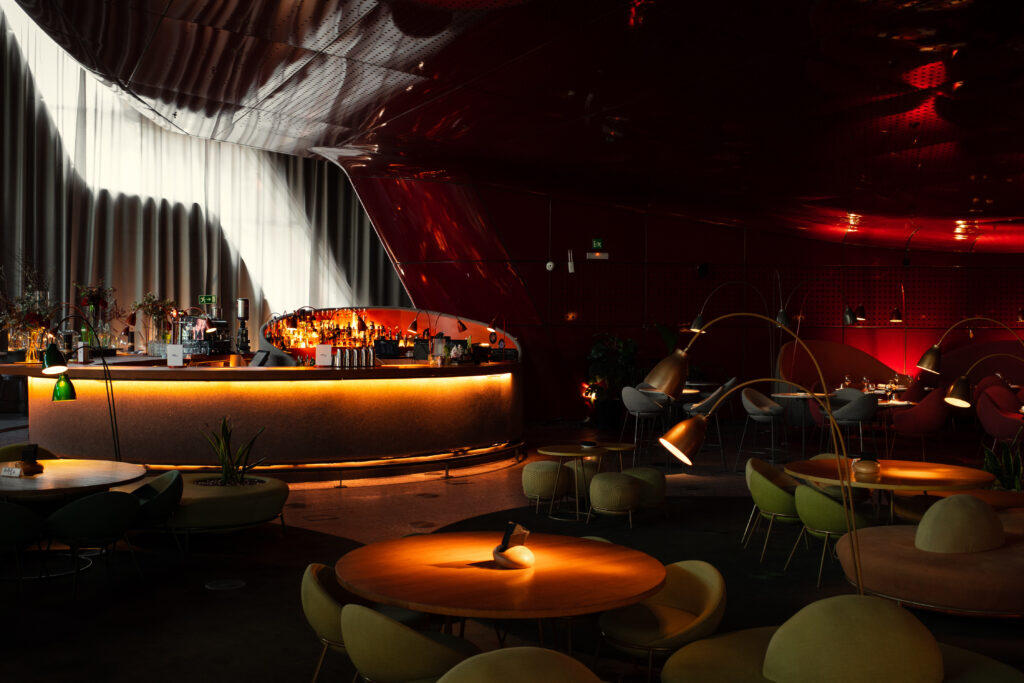3 Design Secrets That Make Casino Restaurants Irresistibly Profitable

Photo courtesy of Freepik
While great food and service continue to be important for a casino restaurant’s success, profitability now depends heavily on deliberate design choices. Gaming floors will always get the attention, but the reality is that modern day casinos now generate a significant portion of their total revenue from their restaurants.
That’s why casino establishments need to think differently from typical restaurants and focus on design elements that strike a balance between serving players quickly and allowing them return to games with ease, resulting in longer stays and repeat visits. Here are some design recommendations that every casino restaurant can use to improve profitability.
Strategic Layout Flow to Maximize Gaming Floor Connectivity
It’s vital for a successful casino restaurant to focus on design elements that make it easy to access the gaming area. If these restaurants fail to serve the patrons, they could be missing out on a great deal. It’s crucial to make dining areas feel like an integral part of the game experience rather than having them in completely separate areas.
The best casino restaurant designs place the dining areas where you get to view all the gaming activity, making sure players can watch the action while they eat. The close proximity makes the meals feel like brief intermissions rather than completely stepping away from the gaming excitement.
That’s where casinos can collaborate with professional design firms, such as I-5 Design Build, as they realize this all-important relationship between spatial flow and revenue generation. These firms come with loads of experience in designing beautiful, high-impact gaming, food and beverages, and entertainment environments. They design restaurants that are seamless extensions of the gaming floor instead of compartmentalized dining areas.
Remember that if casino restaurants fail to get the design flow correct, they risk creating dining areas that are isolated from the action. That isolation can lead to unused restaurant space, missed revenue streams, and worst of all, more gaming interruptions that reduce overall property profitability.
Lighting Design to Enhance Dining without Hurting Gaming Energy
Casino restaurants must pay good attention to illumination because lighting can change a guest’s mood and affect gaming psychology in a subtle manner. The best option is to use layered lighting systems combining task, ambient, and accent lighting to add visual appeal to the whole setting. Ambient lighting in dining zones helps create a cozy environment to make guests feel comfortable, whereas brighter accent fixtures help maintain a visual connection to the gaming floor’s energy.
Similarly, LED systems are particularly handy because they can be installed and programmed for various situations, making sure the light is always adequate for every stage of the meal. Moreover, pendant lighting over tables helps throw light where it’s needed the most while also providing a fascinating focal point.
Color temperature also deserves attention. Warm colors in seating areas feel relaxing and get people talking, while cooler, bluish light near order points allows guests to concentrate and make quicker decisions. Optimal designs combine all these concepts and use low-key lighting to make things cozy in dining areas and lounges. This careful layering and shifting of light temperatures ensures the dining atmosphere stays comfortable and in line with the active casino environment.
Service Speed Systems to Balance Efficiency with Quality
Casino restaurants need to serve guests in a timely manner to ensure they return to the gaming floor to have some more fun. This prompt service is vital for generating repeat business and increased spend. To handle all this, it’s vital to develop advanced operating planning combined with technology, workflow automation, and better staffing models.
Modern casino restaurants now utilize automatic self-service kiosks and electronic ordering systems to reduce wait times. They couple it with convenient payment solutions to raise customer satisfaction. These systems enable guests to order and get back to gaming, while their orders are being prepared, and receive notifications when their food is ready.
Similarly, mobile ordering apps can also be integrated on site to allow players to order food without leaving their games. It’s a good thing because players on a roll or completely engaged in their game don’t have to leave to eat or drink. However, it needs a professional’s help to determine the best kitchen layout and service so food can be made available to the gaming spaces while keeping everything safe and appealing.
Remember, if casino restaurants have inefficient service speed systems, they become bottlenecks that frustrate guests and hamper gaming floor activity. Moreover, poorly designed service systems also drive up labor costs and decrease profit margins, making restaurants less profitable as revenue centers.
Endnote
Learning these design secrets can turn casino restaurants from afterthoughts to real profit-makers. When used correctly, these elements synergistically combine to create dining experiences that fuel gaming activity and draw some serious revenue all on their own.